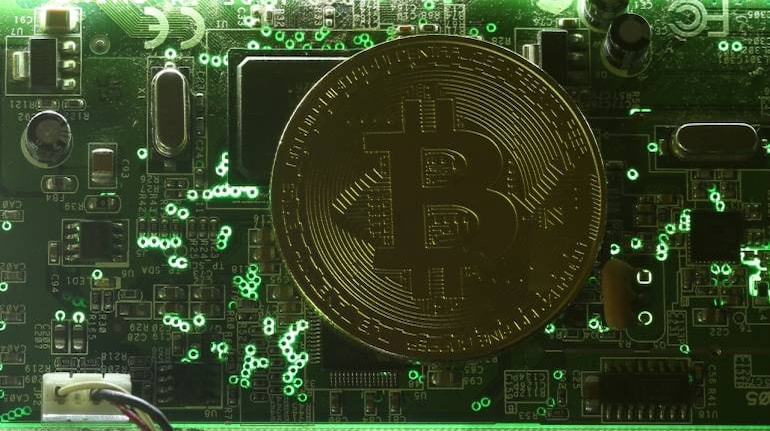
Litecoin, Ethereum, Ripple, Dash, NEM and Monero are some of the altcoins looking to challenge bitcoin.
 In a world going virtual, can currencies be far behind? Obviously not, particularly when cryptocurrency has become a hot button topic in trading and investment circles.
While bitcoins have tended to hog the limelight in this rarefied space, there are multiple other coins or cryptocurrencies that are attracting eyeballs. In that lot, altcoin is fast emerging as a favourite.
An altcoin is a cryptocurrency, or virtual currency. It is an alternative to bitcoin. Altcoins work much like the original Bitcoin. Using a private key, a payment can be sent from a digital wallet A to digital wallet B. In a cryptocurrency such as these, there is a blockchain or recording ledger, where the transactions are permanently and publicly recorded, so exchanges can’t be altered or denied. The blockchain is secured by mathematics proofs, which confirm transactions in block.
Moneycontrol goes deep into the world of altcoins, examining the main issues that surround the coins. Before that though, it is important to familiarise an investor about these coins. It will help set the context.
Right, so think of bitcoins as a digital currency, which cannot be manufactured or printed but only be ‘mined’ by solving complex mathematical problems.
Bitcoin first grabbed peoples’ imagination on January 3, 2009, creating a network of sorts when a mysterious pseudonym known as Satoshi Nakamoto mined the starting block of the chain, known as the genesis block.
Today, this seems like a whole different world. So, are altcoins another form of bitcoin?
No. Altcoins stand for alternate coins or alternate to bitcoins and are non-bitcoin cryptocurrencies. Altcoins also don’t all follow the same rules as Bitcoin. For example, while Bitcoin will only ever mine, or produce, bitcoins every 10 minutes, an altcoin called Litecoin will produce coins every 2.5 minutes. This makes Litecoin able to process payments faster. Litecoin will also produce 84 million litecoins, whereas Bitcoin will only produce 21 million bitcoins. Litecoin also uses a different set of rules for mining than bitcoin. Whereas bitcoins require costly hardware to mine, litecoins can be mined with common computer hardware.
Now why do we need altcoins? Isn’t bitcoin enough for crypto enthusiasts?
Bitcoin was one of the first cryptocurrencies to be developed, but since then, there have been layers of improvement on its structure. Certain altcoins have made transactions cheaper as well as faster. Some consume lesser energy to be mined while others bring in added layers of secrecy. While few have the same proof of concept, some altcoins operate on different proofs of concept. There is a complex technological analysis that can be put forward, but we can keep that for later explanations. The main point is these new coins have made technology stronger, better, making transactions less expensive. In addition, there was also the need for stabler cryptocurrency. Historically, bitcoin is prone to massive value fluctuations. So, there are some stable coins in the market as well, which are pegged against other fiat currencies like US Dollars. Libra, which was to be launched by Facebook and other tech companies, was supposed to be one such stable coin.
Can you give some examples of altcoins?
Interestingly, Litecoin is just one of the thousands of altcoins on the market. A few examples of altcoins include Ethereum, Ripple, Dash, NEM and Monero. Litecoin was introduced in 2011 after the success of bitcoins. While the proof of concept is nearly the same, it operates in different ways. Yet another example of altcoin could be Namecoin. It was also introduced in 2011, and uses the same proof of concept as bitcoins, but what it brings is greater anonymity and helps avoid any form of censorship. As per industry estimates, there could be as many as 5,000 such cryptocurrencies in the world. Except bitcoin, all the rest are clubbed under altcoins.
So, how are these altcoins used?
An Indian crypto trader can buy these altcoins and trade them on crypto exchanges. While bitcoins are extremely expensive, altcoins are comparatively cheaper. So, many traders can place larger bets on these coins. For instance, on a platform like WazirX, there are around 30 coins which can be bought and sold with the Indian Rupee. However, the trick here is to stay away from fraudulent coins. In many cases traders end up investing in little known coins, which have no technology backing and end up losing money. Since this space is unregulated, there are no details available on the coins that are safe to invest or trade in. That way traders can play safe by sticking only to globally known altcoins.
The post What Are Altcoins? All That You Need To Know About The Non-bitcoin Cryptos appeared first on TechFans.
